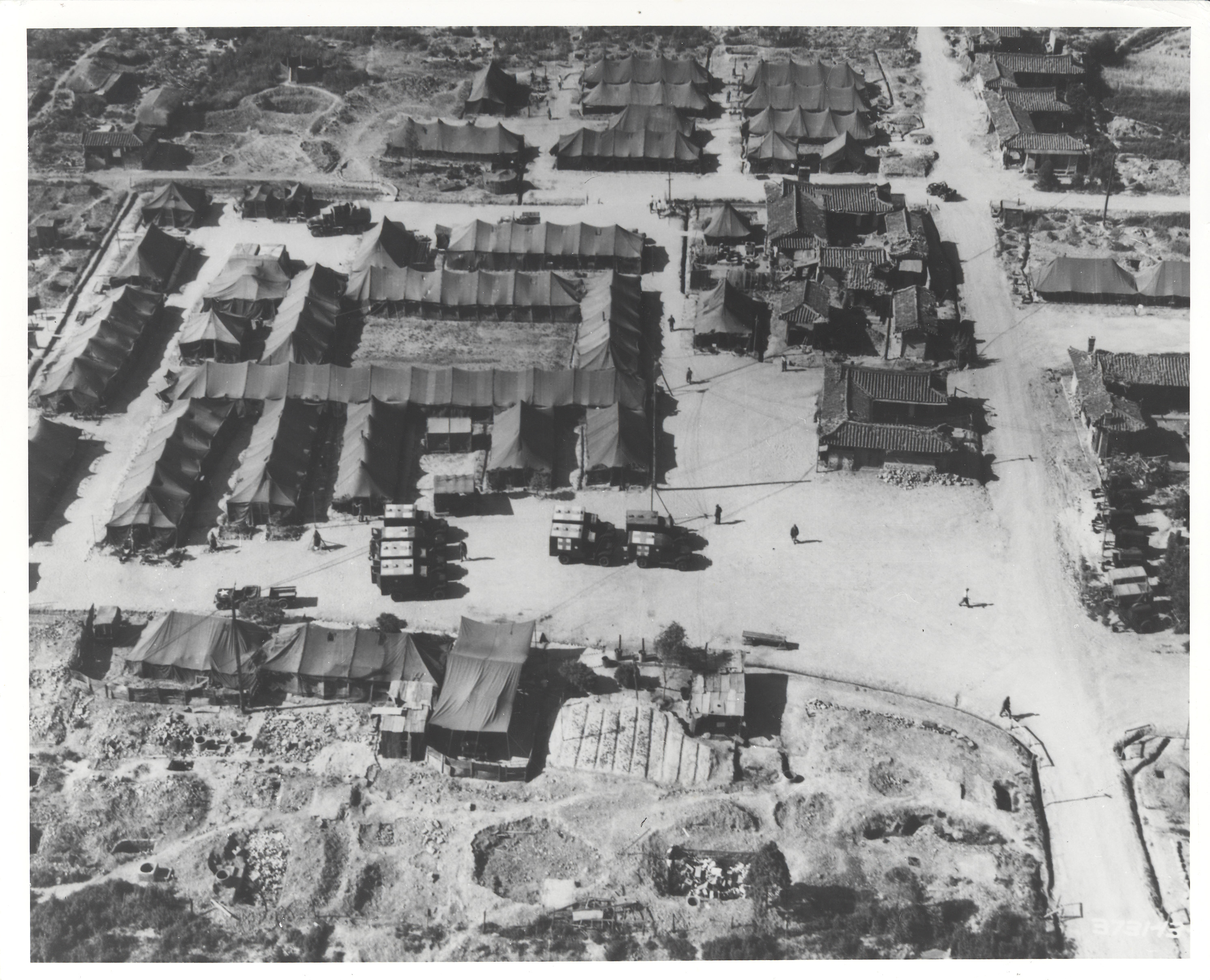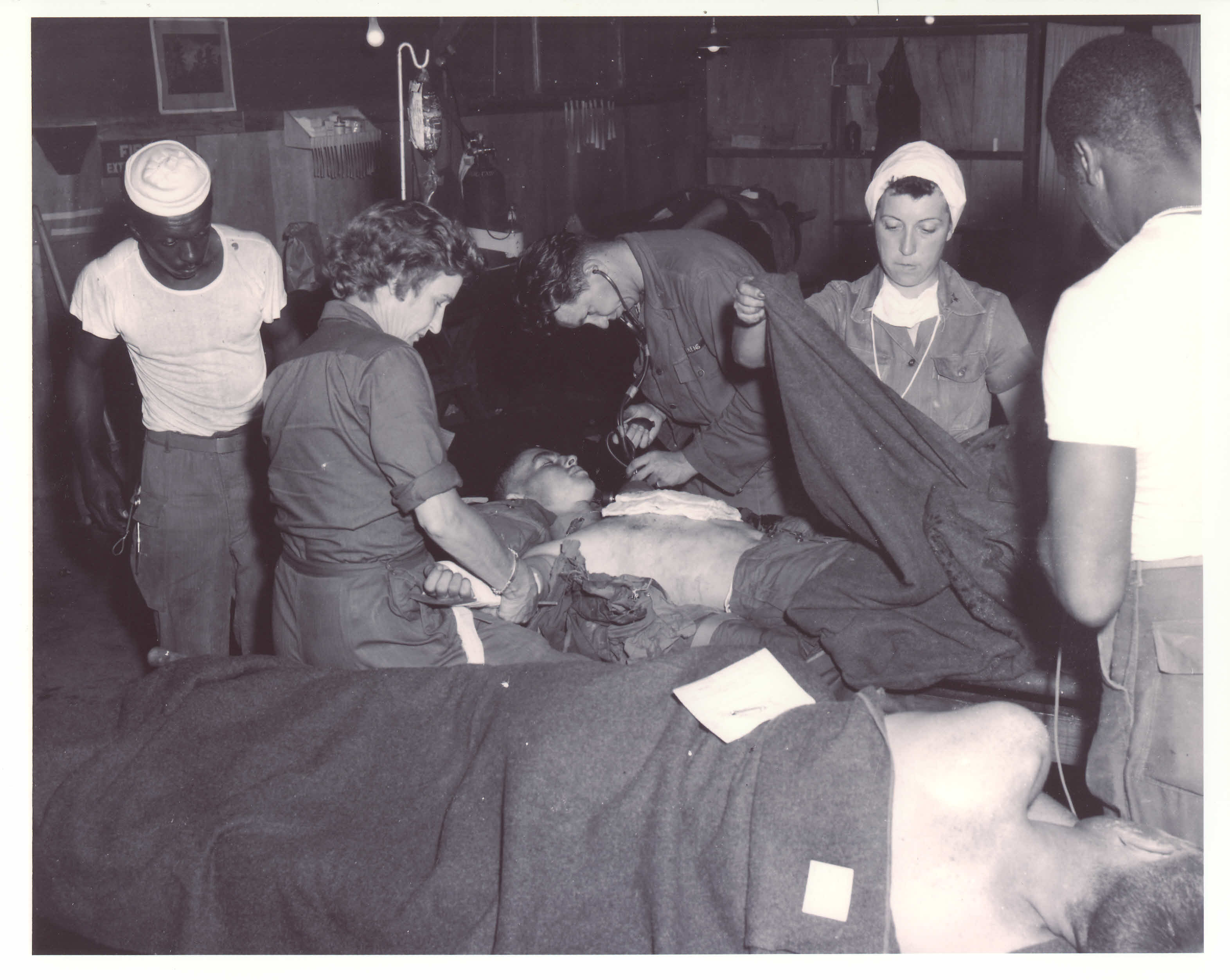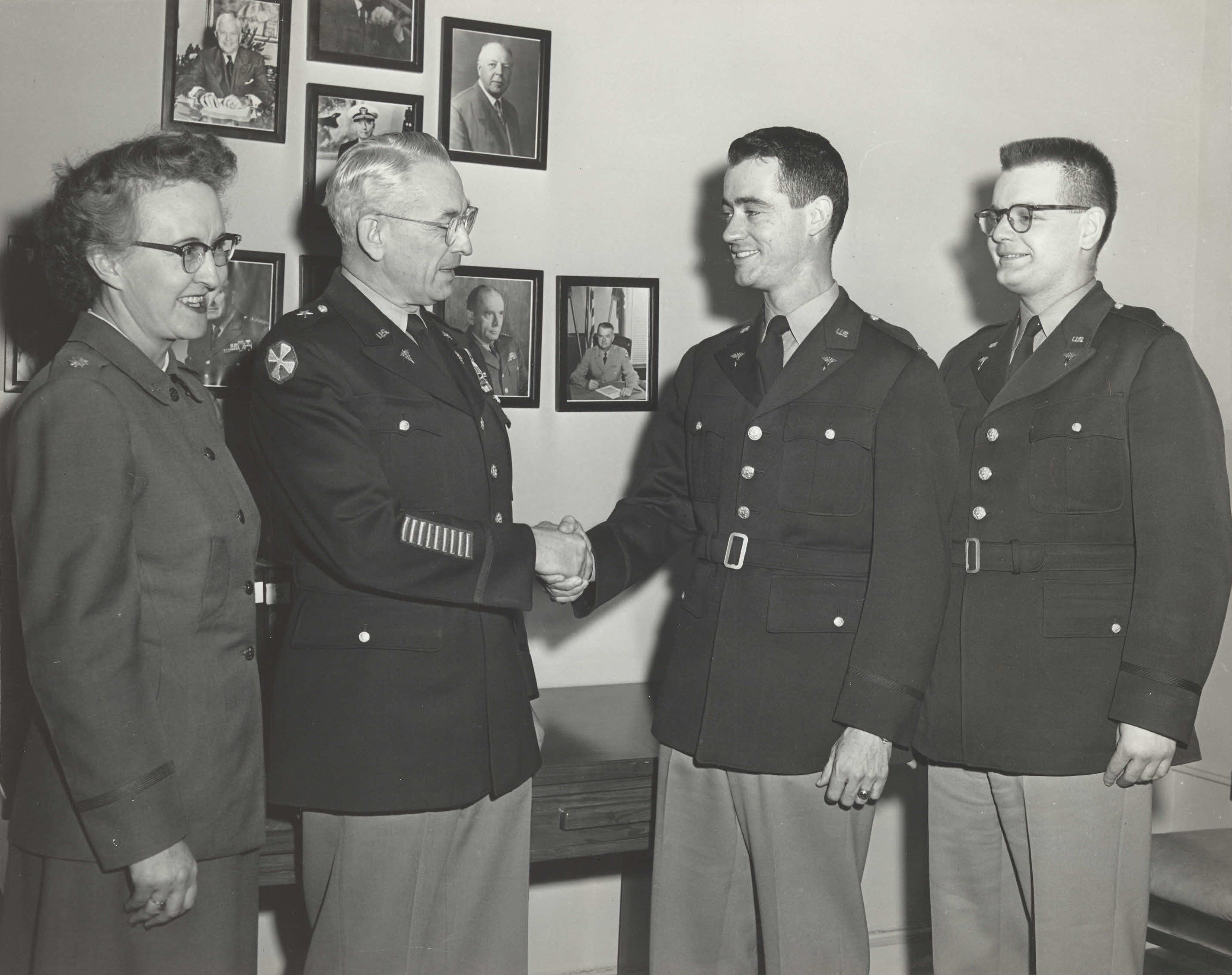Highlights in the History of the Army Nurse Corps, 1950 to 1960
 Army nurses played a major role in support of combat troops
when President Truman ordered United States forces into Korea in June 1950.
Army nurses cared for combat troops during the landing on Inchon, the advance
across the 38th parallel into North Korea, the amphibious landing on the east
coast of Korea, the drive toward the Yalu River, and the retreat to the 38th
parallel.
Army nurses played a major role in support of combat troops
when President Truman ordered United States forces into Korea in June 1950.
Army nurses cared for combat troops during the landing on Inchon, the advance
across the 38th parallel into North Korea, the amphibious landing on the east
coast of Korea, the drive toward the Yalu River, and the retreat to the 38th
parallel.  These officers far exceeded the normal scope of nursing practice as
they independently triaged, started blood transfusions, initiated courses of
penicillin, and sutured wounds. They assumed logistical responsibilities by
monitoring supply chests and ordering replacement blood, oxygen and water.
They improvised whenever supplies and equipment were not available, scrounging
useful items from deserted family quarters or remaking discarded bits and
pieces into functional tools. Throughout the Korean War, 540 Army nurses served
on the embattled peninsula.
These officers far exceeded the normal scope of nursing practice as
they independently triaged, started blood transfusions, initiated courses of
penicillin, and sutured wounds. They assumed logistical responsibilities by
monitoring supply chests and ordering replacement blood, oxygen and water.
They improvised whenever supplies and equipment were not available, scrounging
useful items from deserted family quarters or remaking discarded bits and
pieces into functional tools. Throughout the Korean War, 540 Army nurses served
on the embattled peninsula.
 During this time, all the hospitals outside of Korea were busy
caring for injured and ill service members who had been transported to their
premises. Military medical centers tended 1500-2000 inpatients daily. Air
evacuations could come in any time of day so the nurse supervisors and head nurses
were constantly managing the number of admissions and discharges so that new
patients were assigned beds. Often the hallways and day rooms on the units
were used for overflow. Hospital care also expanded to include greater numbers
of dependents so obstetrics and pediatrics units were busy caring for family
members.
During this time, all the hospitals outside of Korea were busy
caring for injured and ill service members who had been transported to their
premises. Military medical centers tended 1500-2000 inpatients daily. Air
evacuations could come in any time of day so the nurse supervisors and head nurses
were constantly managing the number of admissions and discharges so that new
patients were assigned beds. Often the hallways and day rooms on the units
were used for overflow. Hospital care also expanded to include greater numbers
of dependents so obstetrics and pediatrics units were busy caring for family
members.
During this decade, many changes took place which have
impacted the nurse corps today. The first course in nursing administration,
which later became the Captains Career Course, was established at the U.S. Army
Medical Field Service School, (to later become the AMEDD Center and School). The
twenty-week course included principles of nursing administration, current
trends in nursing, principles of supervision and teaching, hospital
organization and functions, and personnel administration.  Closed-circuit color
television was used for the first time in Army nursing instruction, when live
coverage of surgical procedures in the operating room at Walter Reed General
Hospital was transmitted to
a classroom in another building on the hospital’s campus.
Closed-circuit color
television was used for the first time in Army nursing instruction, when live
coverage of surgical procedures in the operating room at Walter Reed General
Hospital was transmitted to
a classroom in another building on the hospital’s campus.
A career guidance program was established in the
Office of the Surgeon General. In 1955 Public Law 294 authorized commissions for male
nurses in the U.S. Army Reserve for assignment to the Army Nurse Corps Branch.
Photos
|
Left side:
8055th Mobile Army Surgical Hospital at Yongdungpo, Korea
Lt. Dolores Navarrette in the orthopedic ward,
Letterman General Hospital, 1951
|
Right from top:
Triaging and preparing a casualty for surgery in Korea
2d Lt. Joseph M. Tracy and 1st Lt. John W. O’Brien, the first
male ANCs to serve in the 4th Army area, are greeted by the
Command Surgeon and Chief Nurse
|
Text by ANCA Historian COL (Ret.) C. J. Moore; Photos courtesy of the Army Medical Department Center of History and Heritage